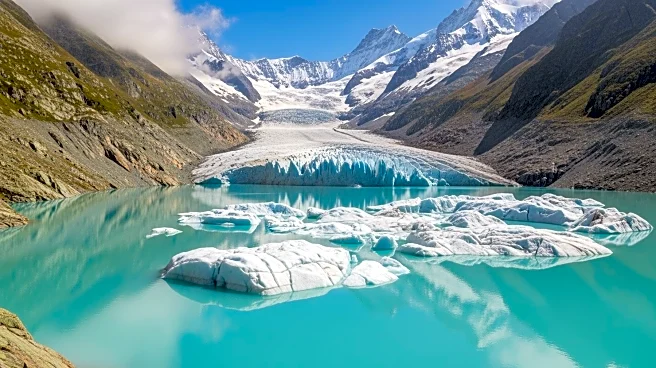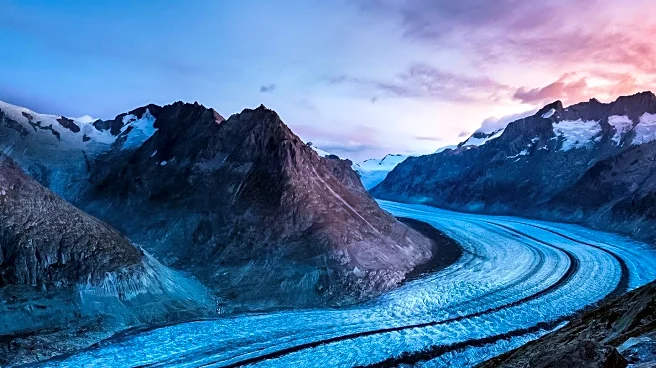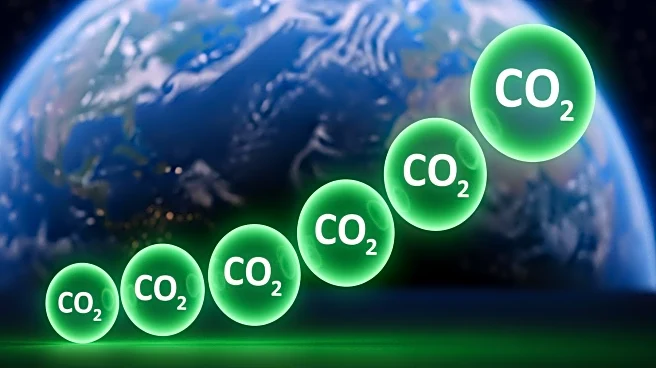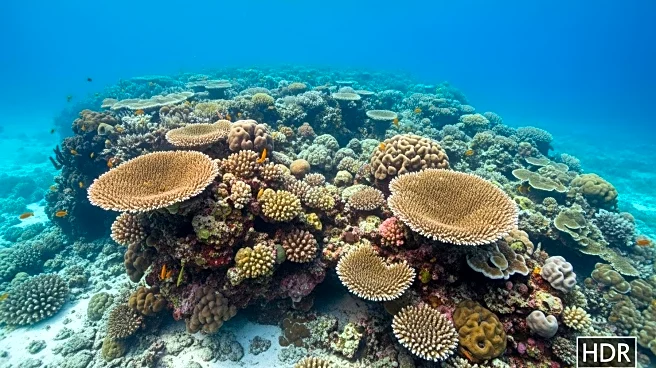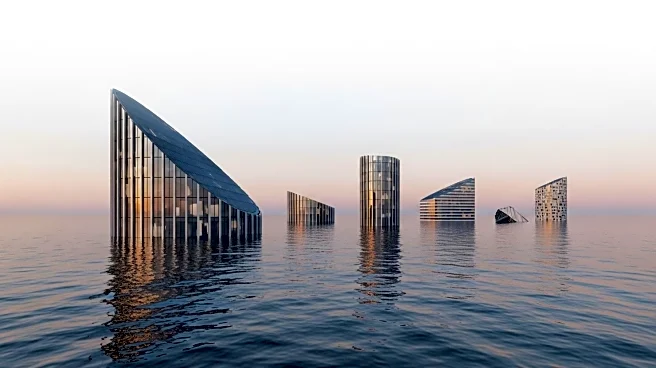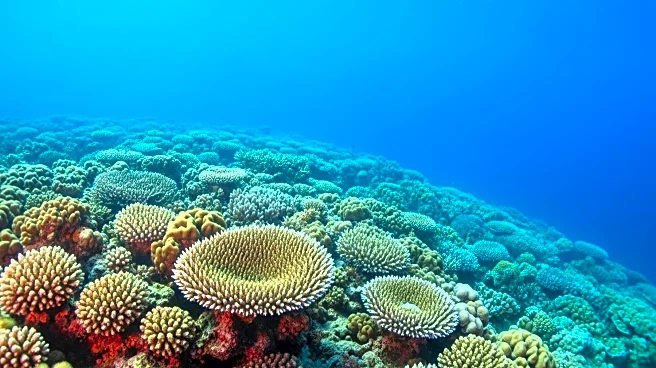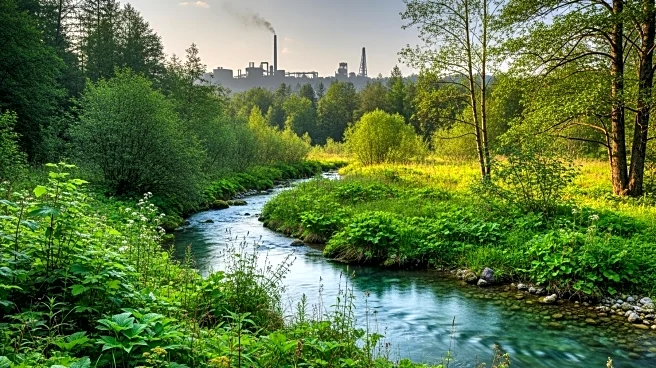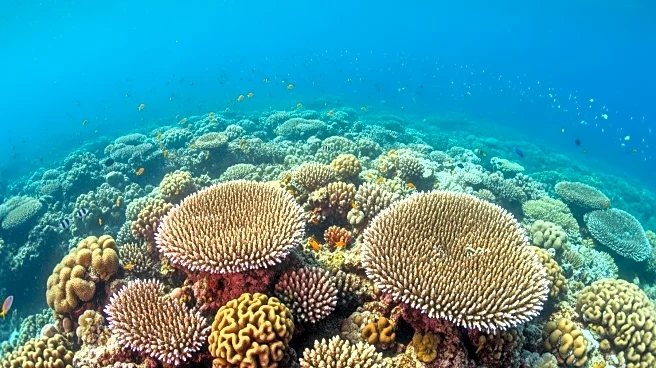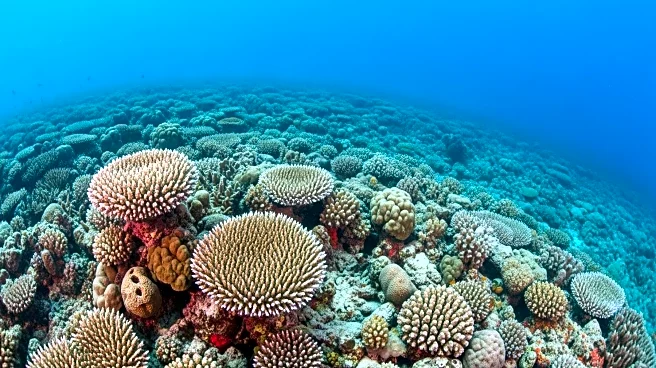What's Happening?
Scientists from ETH Zurich conducted a visual experiment at the Rhône Glacier in the Swiss Alps, using pink dye to highlight the rapid melting of the glacier. The experiment aimed to demonstrate the pace
at which water flows off the glacier, which is faster than ever. The team navigated the glacier's surface, avoiding crevasses, while measuring the water flow and documenting the glacier's decline.
Why It's Important?
The melting of the Rhône Glacier serves as a stark reminder of the effects of climate change on natural landscapes. As glaciers retreat, they contribute to rising sea levels and alter local ecosystems. The visual demonstration underscores the urgency for global climate action to mitigate further environmental damage and preserve vital water resources.
What's Next?
Continued monitoring and research on glacier dynamics are essential to understand the long-term impacts of climate change. Policymakers may need to prioritize climate adaptation strategies, including investment in renewable energy and conservation efforts. International cooperation could be crucial in addressing the broader implications of glacier melt on global water systems.
Beyond the Headlines
The ethical considerations of glacier melt involve the responsibility to protect vulnerable ecosystems and communities affected by climate change. Legal frameworks may need adaptation to support conservation initiatives and enforce environmental protections. Culturally, there may be increased awareness and advocacy for sustainable practices and climate resilience.
